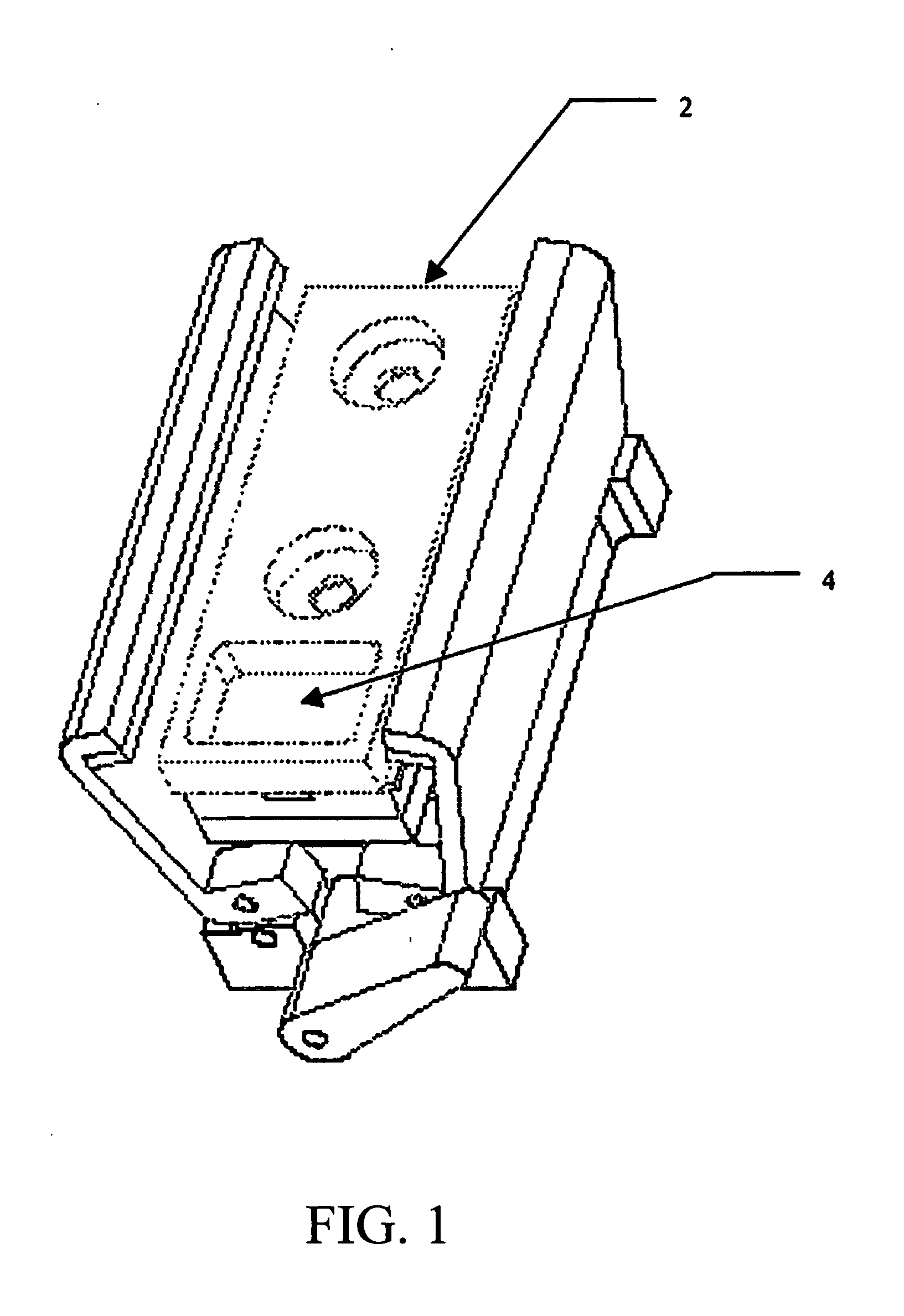System for establishing a sample cover on a substrate
a substrate and sample technology, applied in the field of clamping devices, can solve the problems of varying internal chamber volumes, broken slides, inadequate sealing of chambers, etc., and achieve the effects of reducing costs, and reducing the number of components
- Summary
- Abstract
- Description
- Claims
- Application Information
AI Technical Summary
Benefits of technology
Problems solved by technology
Method used
Image
Examples
example 1
COL
[0094] A biological specimen (tissue sample) is fixed in formalin and then embedded with paraffin by standard procedures. The embedded tissue is attached to a glass microscope slide. The tissue is then deparaffinized while on the slide by standard deparaffinizing procedures. The glass slide with the attached biological specimen is placed on top of the heater plate. A disposable support cover with an inlet and outlet port and integral seal is placed on top of the glass slide. The latches of the clamp mechanism are closed over the cover and the clamp is engaged by rotating the lever counterclockwise. The cover now makes a sealed chamber (except for the open ports) over the biological specimen on the slide. Reagents and wash buffers are then injected into the chamber through the inlet port in the following order. Each reagent and wash buffer application has its own temperature requirements and incubation times.
STEP NO.REAGENTTEMP. ° C.TIME1Proteolytic treatment, 10-200 μL37° C.30m...
example 2
OCOL
[0098] A biological specimen (tissue sample) is fixed in formalin and then embedded with paraffin by standard procedures. The embedded tissue is attached to a glass microscope slide. The tissue is then deparaffinized while on the slide by standard deparaffinizing procedures. The glass slide with the attached biological specimen is placed on top of the heater plate. A disposable support cover with an inlet and outlet port and integral seal is placed on top of the glass slide. The latches of the clamp mechanism are closed over the cover and the clamp is engaged by rotating the lever counterclockwise. The cover now makes a sealed chamber (except for the open ports) over the biological specimen on the slide. Reagents and wash buffers are then injected into the chamber through the inlet port in the following order. Each reagent and wash buffer application has its own temperature requirements and incubation times.
STEPNO.REAGENTTEMP. ° C.TIME 1Dehydrate, 100% ethanol 1-5 mlRT10minute...
example 3
ARRAY PROTOCOL
[0100] A glass slide with the attached DNA microarray is placed on top of the heater plate. A disposable support cover with an inlet and outlet port and integral seal is placed on top of the glass slide. The latches of the clamp mechanism are closed over the cover and the clamp is engaged by rotating the lever counterclockwise. The cover now makes a sealed chamber (except for the open ports) over the microarray on the slide. Reagents and wash buffers are then injected into the chamber through the inlet port in the following order. Each reagent and wash buffer application has its own temperature requirements and incubation times.
STEP NO.REAGENTTEMP. ° C.TIME 1Prehybridization solution,37° C.0.5-2hrs10-200 μL. Sealinlet / outlet ports2Remove port seals3Wash w / dH20 1-5 mlRT4Fluorescent target65° C.2minuteshybridization solution,10-200 μL.Seal inlet / outlet ports5Target hybridization solution37° C.16hrs.6Remove port seals7Wash .1X SSC w / .1% SDS,RT1-5 ml8Wash .1X SSC, 1-5 ml...
PUM
| Property | Measurement | Unit |
|---|---|---|
| volumes | aaaaa | aaaaa |
| temperature | aaaaa | aaaaa |
| temperature | aaaaa | aaaaa |
Abstract
Description
Claims
Application Information
 Login to View More
Login to View More - R&D
- Intellectual Property
- Life Sciences
- Materials
- Tech Scout
- Unparalleled Data Quality
- Higher Quality Content
- 60% Fewer Hallucinations
Browse by: Latest US Patents, China's latest patents, Technical Efficacy Thesaurus, Application Domain, Technology Topic, Popular Technical Reports.
© 2025 PatSnap. All rights reserved.Legal|Privacy policy|Modern Slavery Act Transparency Statement|Sitemap|About US| Contact US: help@patsnap.com



